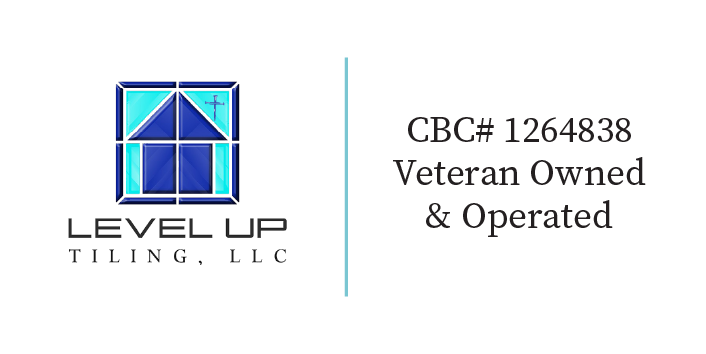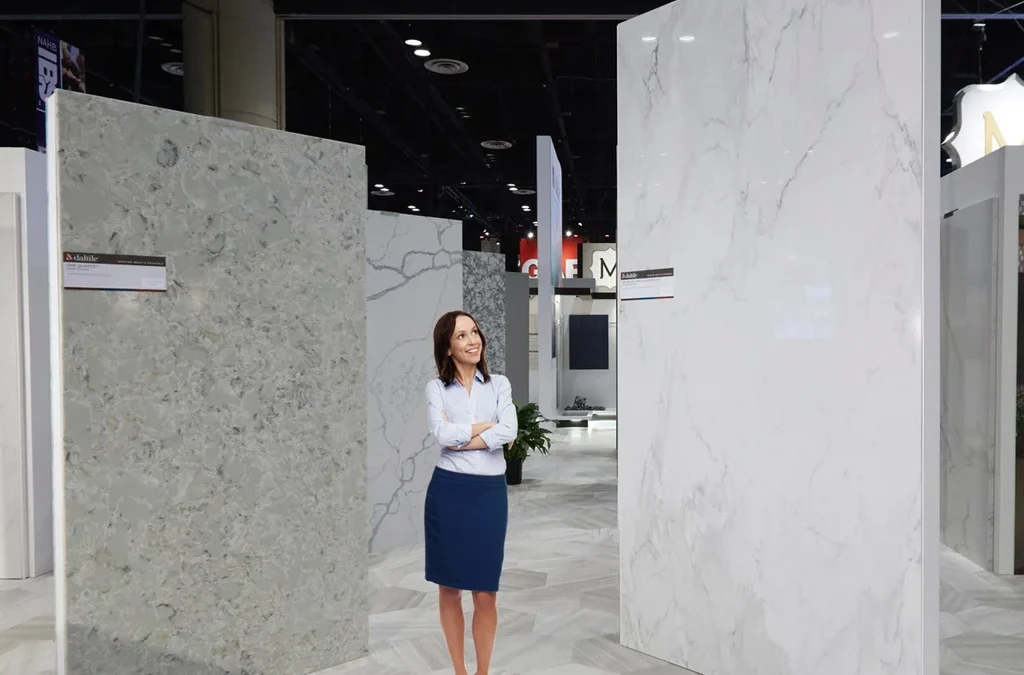Large format tiles have surged in popularity in recent years, becoming a go-to choice for modern, sleek designs in both residential and commercial spaces. These tiles, typically considered “large format” when they exceed 15 inches in any dimension, can create a stunning visual impact with fewer grout lines and a clean, expansive look. However, while they offer many aesthetic and functional advantages, large format tiles also come with specific challenges that require careful consideration during installation.
In this guide, we’ll break down the pros and cons of using large format tiles to help you decide if they’re the right fit for your space. We’ll explore both the design benefits and the technical aspects you’ll need to keep in mind before committing to this trendy tile choice.
The Pros of Large Format Tiles
1. Sleek, Modern Aesthetic
One of the most appealing aspects of large format tiles is their ability to create a clean, contemporary look. With fewer grout lines breaking up the surface, these tiles offer a smooth, uninterrupted finish that makes spaces feel larger and more cohesive.
- Minimalist Appeal: The larger surface area of each tile means fewer visual interruptions, which enhances the minimalist, streamlined design that is so popular in today’s interiors.
- Expansive Feel: In smaller spaces like bathrooms, using large tiles can create the illusion of more space. By minimizing grout lines, the walls or floors appear less cluttered, giving a more open and airy feeling.
2. Less Grout Maintenance
A major benefit of large format tiles is that they reduce the amount of grout required for installation. Grout lines can be prone to discoloration, staining, and deterioration over time, particularly in areas exposed to moisture like bathrooms and kitchens.
- Easier Cleaning: With fewer grout lines to scrub, large format tiles make maintenance easier. This is especially helpful in high-traffic areas or spaces where dirt and moisture are common.
- Longevity: Since grout is more likely to crack or deteriorate than the tiles themselves, minimizing grout lines can increase the overall durability and longevity of your installation.
3. Versatility Across Spaces
Large format tiles aren’t just for floors—they work well on walls, in showers, and even as countertops. Their versatility makes them a great choice for creating a cohesive look throughout a home, tying together different areas with a consistent style.
- Wall Applications: Large tiles on walls create a striking, seamless appearance, especially in shower enclosures or as a feature wall. This can bring a spa-like elegance to bathrooms or a bold statement to living areas.
- Outdoor Use: Large format tiles are increasingly being used in outdoor spaces, such as patios or around pools, where their durability and easy maintenance make them a smart choice.
The Cons of Large Format Tiles
While large format tiles can elevate the look of a space, they also come with challenges, particularly during the installation process. Here are some potential drawbacks to consider:
1. Surface Preparation is Critical
Large format tiles are less forgiving when it comes to uneven surfaces. Because of their size, any slight irregularities in the subfloor or wall can result in the tile not sitting flush, leading to unsightly lippage (when one tile’s edge is higher than the adjacent tile) or even cracks over time.
- Perfectly Level Surfaces Required: The larger the tile, the more important it is that the underlying surface is completely flat. Even a small bump or dip can cause problems. Preparing the surface with self-leveling compounds or smoothing walls may be necessary to avoid these issues.
- Time and Cost: Ensuring a level surface can add time and expense to your project, especially if significant preparation work is needed. This extra step is crucial for a flawless installation.
2. Difficult to Handle and Install
Large format tiles are heavier and more cumbersome than standard tiles, which can make handling and installation tricky, especially for DIY enthusiasts. Improper handling can result in broken tiles, wasted materials, and a challenging installation process.
- Fragility: Despite their size, large format tiles can be surprisingly fragile. The weight and surface area increase the risk of cracking if they’re not handled properly, particularly during cutting or positioning.
- Specialized Tools Required: Installing large tiles often requires specialized tools, such as large trowels, suction cups, and tile leveling systems, to ensure even placement. Cutting large tiles to fit corners or edges can also be more difficult without the right equipment, such as a large-format tile cutter or wet saw.
- Two-Person Job: Due to their size and weight, large format tiles often require at least two people to install them correctly. This can complicate DIY installations, making it harder to ensure proper alignment and placement.
3. Challenging Layouts and Cuts
Working with large tiles can limit your flexibility in design. While smaller tiles can easily be adapted to fit into tight corners, around fixtures, or in irregularly shaped rooms, large format tiles are more challenging to cut and position.
- Limited Layout Options: Because of their size, large format tiles may not suit every space, especially in rooms with irregular dimensions or multiple obstacles like outlets, pipes, or built-in furniture.
- Waste: Cutting large tiles to fit around obstacles can result in significant material waste. This is particularly true if precise measurements aren’t taken beforehand, leading to costly errors.
4. Grout Cracking in Large Areas
Although large tiles mean fewer grout lines, the spaces between these grout lines are often wider. This can make grout more prone to cracking if the tiles shift over time due to temperature changes, settling, or improper installation.
- Expansion Joints: Larger tiles tend to expand and contract more than smaller tiles, especially in areas with significant temperature fluctuations, like outdoor patios or heated bathroom floors. Without proper expansion joints, the tiles or grout can crack over time.
- Additional Sealants: In some cases, sealing the grout or using epoxy grout can help mitigate these issues, but this adds another step (and cost) to the installation process.
Important Considerations Before Choosing Large Format Tiles
Before deciding whether large format tiles are the right choice for your project, it’s important to consider a few key factors:
1. Room Size and Layout
Large format tiles can be a great choice for larger rooms, where their size can help create an expansive, uninterrupted feel. However, in smaller rooms, they can sometimes overwhelm the space or make it harder to achieve a balanced layout.
- Best in Open Areas: Consider using large format tiles in open-plan spaces like living rooms, dining areas, or expansive bathrooms, where their size can shine. In smaller, more confined areas, you may want to balance the use of large tiles with smaller ones to maintain proportion.
2. The Skill Level Required
Installing large format tiles requires a high level of skill and experience, especially when it comes to ensuring proper alignment, surface preparation, and avoiding lippage. If you’re attempting a DIY project, be aware that handling and cutting large tiles can be significantly more difficult than working with standard tiles.
- Consider Professional Installation: If you’re set on using large format tiles but concerned about the complexities of installation, professional help might be the way to go. Experienced installers can ensure that your tiles are laid perfectly, avoiding common issues like uneven surfaces or cracked tiles.
3. Budget for Materials and Labor
Large format tiles can sometimes be more expensive than their smaller counterparts, both in terms of the cost of the tiles themselves and the tools required to install them. Additionally, because these tiles require more precision and preparation, labor costs can be higher if you choose to hire a professional.
Conclusion: Are Large Format Tiles Right for You?
Large format tiles offer undeniable aesthetic and practical benefits, from creating a sleek, modern look to reducing the amount of grout lines that require maintenance. However, their size brings with it a unique set of challenges, particularly during installation. Proper surface preparation, specialized tools, and the right expertise are essential for a successful result.
While DIY enthusiasts may be tempted to tackle a large format tile installation on their own, it’s important to consider the complexities involved. For those who want a seamless, high-end finish without the hassle, hiring a professional may be the best option to ensure the tiles are installed correctly and will stand the test of time.
Ultimately, if you love the look of large format tiles and are willing to invest in the proper preparation and expertise, they can be an excellent choice for elevating the design of your space.


